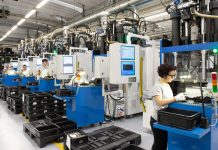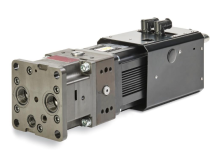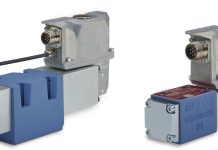The vacuum technology is in constant evolution. The definition itself of the vacuum concept has aroused the interest of the smartest and most genial minds since ancient times. Let us think of Democritus in Ancient Greece, who identifies atoms and vacuum as primary realities, or of the studies about the air compressibility in Hellenistic age. Thanks to Vuototecnica, we travel across the most interesting solutions that concern vacuum applications.
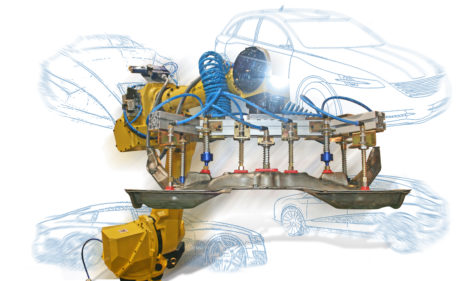
The first who theorized the vacuum properties, in 1650, was the jurist scientist Otto von Guericke, who laid the bases for the development of today’s technology used daily in several industrial sectors. In the history course, the development of physical sciences and the boost of the technical research have always urged the need of implementing vacuum production and measurement systems. The key instrument of the vacuum technology is the cup, used for the handling of cardboard boxes, wood panels, marble and granite slabs, glasses but also plastic bags, abrasive wheels and much more. Vuototecnica offers a broad range, with peculiar characteristics that mark out its specificity: cup-shaped vacuum cups, the most common, are used for handling objects of very light weight, with even rough or irregular surfaces, like plastic boxes, subtle metal or glass slabs or wood panels. There are anyway also bellow cups, when it is necessary to handle or to browse paper sheets or thin sheet metals. Flat, round or rectangular cups for the vertical and horizontal handling of heavy loads, such as marble or granite slabs. Sponge rubber vacuum cups for gripping raw or very rough surfaces, like rough concrete, sawn marble and anti-slip sheets. Cups for handling oiled sheet metals or bodywork parts.
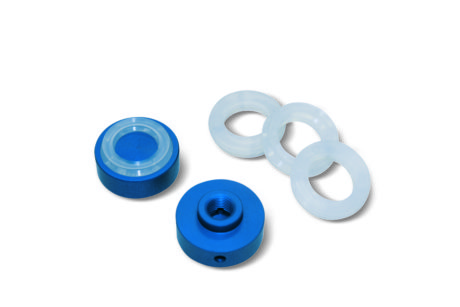
Circular crown vacuum cups, able to seize loads with a central hole, like Compact Disc, drilled disks, gears or similar. Flat elliptic cups, used in the handling of plastic objects, boxes with limited gripping surface. Particular cups, with various shapes, which can solve all countless gripping and handling problems, suitable for grasping optical discs (CD and DVD), and for handling envelopes, labels, biscuits and chocolates, figurines, tiles and small metal parts.
Vacuum in the automotive and nautical industry
The Automotive sector increasingly requires systems with excellent performances but with reduced weight and overall dimensions. To satisfy these requirements, Vuototecnica, in strict collaboration with the engineering departments of primary automotive industries, has created the new Automotive Vacuum Generators (AVG).
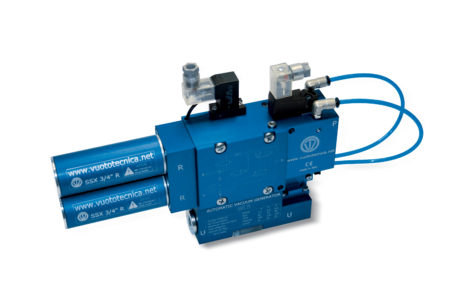
They are purposely equipped with single ejectors that, given the same capacity as multi-ejector generators, allow a quicker vacuum generation and a consequent instantaneous grip by the cups (Maxigrip Cups) they equip, granting, compared to conventional vacuum generators, the 40% energy saving in terms of air consumption. From earth to water: Vuototecnica has expressly studied for the nautical sector a system that allows the vacuum infusion moulding of resins, through a new mobile system that grants the best finishing in operations such as infusion, granting the best operational flexibility required in shipyards. The resin, contained in an apposite container, is vacuum-sucked inside a mould, until its total filling. The resin in excess that reaches the inside of the autoclave of steel sheet is visualized through the transparent methacrylate cover, manually removable for the interior cleaning when the process is accomplished. Oil bath vacuum pumps installed allow reaching a maximum 99.5% vacuum degree inside the autoclave, thus permitting the device use as degasser, too. The vacuum reducer installed on board as standard allows regulating the vacuum degree within the minimum 20% value and 99.5% maximum one. The fine regulation of the vacuum degree is of fundamental importance for infusion applications where the pressing of pre-impregnated carbon fibres inside a mould, closed in a bag, occurs in virtue of the vacuum generated inside the bag itself and of the consequent atmospheric pressure that acts uniformly on it.
Vacuum in the food sector
Each food has its own characteristics: for the best conservation, it is necessary to know them and to take into account the various mutual combinations of foods, too. Moreover, various cooking and heating methods influence the food healthiness. One of the most used methods to grant a correct food conservation is the vacuum conservation. Confectionery industries work at full rate to package goodies of all kinds: chocolates, snacks and candies. Vuototecnica has designed some vacuum cup holders of food-grade silicon with magnetic sensor that allows the cup to handle the pieces while counting them at the same time, thus avoiding the unpleasant surprise of a partially empty chocolate box. The magnetic sensor, very important part of the device, provides an electric pulse to the handling machine whenever the suction occurs correctly; a signal is instead sent to the PLC when pieces are not correctly taken. In the latter case, a second packaging phase will provide for correcting the error.
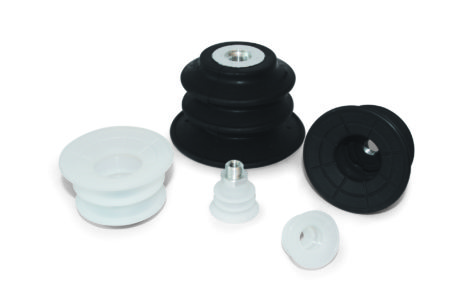
To avoid breaking crackers and other light and friable alimentary products, manufacturers turn to special handling techniques, with BEC cups for the contactless gripping by Vuototecnica. Conceived for semiconductor plates, silica discs, solar cells, precious metal foils and films, they find very broad applications in the food industry, too. Cups are based on the lifting principle of a plane’s wing: the lift effect they generate allows lifting light products without needing any contact and it is broadly used to lift and to separate sheets of paper, cardboard or stacked laminations. In the handling of friable baked products such as crackers, you avoid noxious obstructions and downtimes. In September there is the rice harvesting: in all Italy, sector operators are committed to the activities of selection and packaging of this food that will be then the king of our winter cuisine. Once packaged, anyway, it must be distributed and are necessary palletizing robots able to handle even very heavy bags and to introduce them, without breaking them, into boxes intended for final distributors. Vuototecnica proposes the innovative Octopus vacuum gripping system with suction plates purposely created for gripping paper or plastic sacs containing cereals, powders, loose products or liquids. Suction plates show a spongy seal that limits the bag deformations while gripping and grants a uniform contact with the entire surface, thus avoiding package tears and undesired vacuum losses. The spongy rubber maintains its elasticity even after countless working cycles, it is self-adhesive, easily replaceable and made of a special compound that allows the grip on even very irregular surfaces. When you work in dusty environments, such as in agricultural and food industries, it is then necessary to prevent annoying locks of gripping systems. Dusts are then sucked through microscopic holes and are retained by a filtering disc made of stainless steel grid positioned inside the base box of the bar, anyway always easily inspected for cleaning. Impalpable dusts, which the filtering disc cannot retain, are finally sucked and ejected by the vacuum generator. As all know, the egg handling is a very delicate activity that, at industrial level, provides however for fast times, to maximise the productivity. Special Vuototecnica bellows cups for the egg gripping have the characteristic of retracting in vacuum contact with the egg surface and of creating a very fast and at the same delicate lifting motion. The generation and the regulation of the vacuum degree, in the specific case of eggs, must be limited to avoid damaging the shells owing to the excessive force impressed by the cup. Concerning this, vacuum reducers assure the regulation and the maintenance of a low vacuum degree inside cups without partializing the suction flow rate of the vacuum source. There are two different typologies of instruments for the vacuum creation: single-stage pneumatic ejectors or multi-stage (adjusting their vacuum degree simply through the regulation of the feeding pressure) or electric vacuum pumps with rotary blades, equipped with vacuum reducer. They are vacuum generators that certainly constitute an alternative to the more conventional suction pumps with lateral channels that are often installed on board of the handling systems of eggs, but with great advantages for the manufacturer and the end-user, in terms of noise reduction, maintenance and energy saving.
Saving energy with vacuum
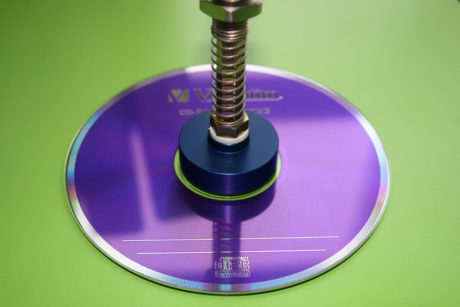
Designing and implementing solutions that allow obtaining an energy saving has become a must because it allows a fundamental decrease of production costs, mainly for all industrial processes where the primary energy has a high cost, and shares in the compliance with the environmental sustainability. However, all vacuum plants are often used wrongly, sometimes they are oversized or neglected owing to the missing knowledge of the new technologies of vacuum generation, with consequent excessive energy consumption. In a vacuum generation plant, the correct sizing and an adequate equipment often lead to the 50% energy saving and to a drastic reduction of wear and maintenance of vacuum pumps. In 60% of cases, vacuum pumps operate uninterruptedly also when the automatism or the plant where they are installed does not need vacuum. This implies a waste of energy, precocious wear and a constant maintenance, to avoid machine downtime problems. All that generates some costs that affect the operation economy of the plant, therefore, where the work cycle allows it, the use of an air pump or of a vacuum unit allows reducing the number of direct suction pumps, decreasing by 40% the effective time of pump operation, given the same work cycle of one or more always active pumps. The improvement of the low operation cost of vacuum generation plants amortizes on average the invested capital in an operation time lapse from 6 months to 1 year: also for this aspect, Vuototecnica proposes and suggests the solutions permitting to optimize users’ technical and economic requirements.

